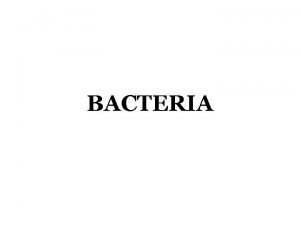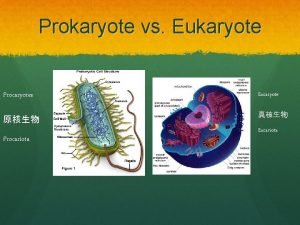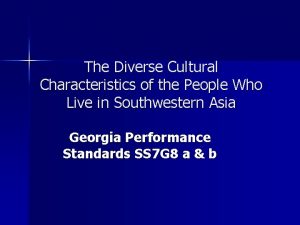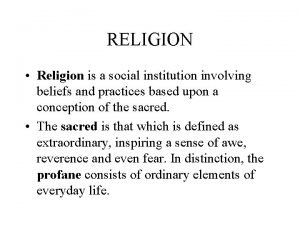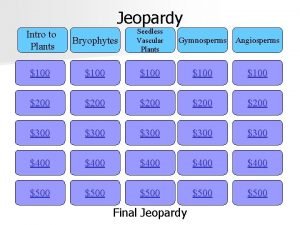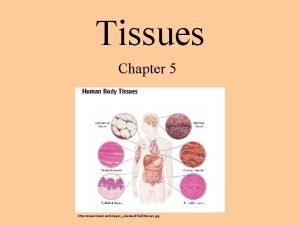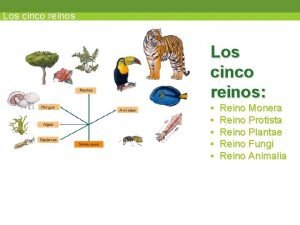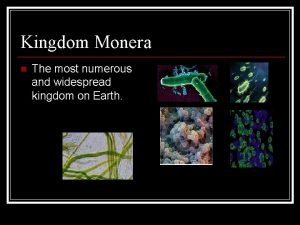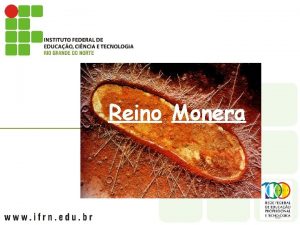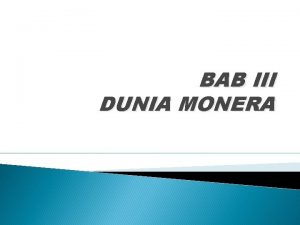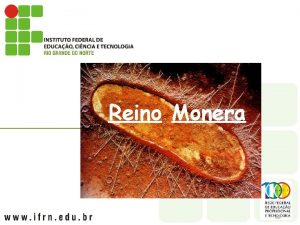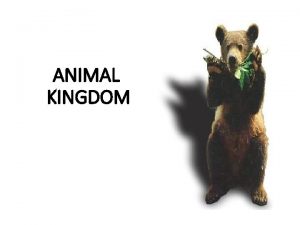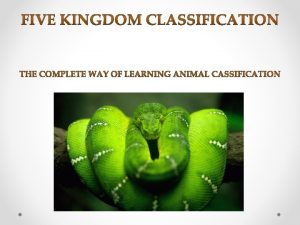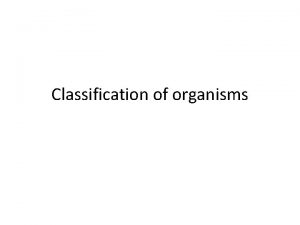Kingdom Monera Characteristics Most numerous and widespread organisms












- Slides: 12

Kingdom Monera

Characteristics Most numerous and widespread organisms on Earth. Includes the smallest and simplest life-forms Unicellular Single-celled Live in chains of clusters Only Kingdom made of prokaryotic organisms Have no nucleus

3 Basic Classifications of Bacteria Archaebacteria Eubacteria Mycoplasmas

Archaebacteria Bacteria that survive best in extreme environments. Examples: hot springs, deep sea vents, boiling muds Includes methane-forming, salt loving and heat loving bacteria. Morning Glory Pool: Yellowstone National Park The coloring comes from the massive amount of archaebacteria (which are chemo-synthesizers) and can withstand extreme temperatures. Thermoacidophilic bacteria can only live in water which is very hot (70 - 75° C) and as acidic as concentrated sulphuric acid. They are found in hot springs.

Eubacteria Known as the true bacteria Found in numerous environments such as the surface of human skin, the intestines of an animal, on a log, etc. Often identified with the Gram Stain Method Gram Negative- cannot retain stain when tested Gram Positive- stain dark blue or violet

2 Major Groups in Kingdom True Bacteria and Cyanobacteria

Characteristics of True Bacteria Absorb food molecules from their surroundings Rely on other organisms to provide them with food. Decompose other living things to gain energy Due to this they are often called Decomposers Can be beneficial to humans Example: In the intestines, bacteria help digest food properly.

Cyanobacteria Live in fresh water Contain chlorophyll and produce their own food Different shapes and attach to each other in long chains or clusters. Example Cyanobacteria: smelly, green scum found on the top of the pond.

Mycoplasmas Smallest living cells ever discovered

Three Basic Shapes of Bacteria Cocci Round Responsible for strep throat Bacilli Rod-Shaped Responsible for tooth decay and anthrax Spirilli Spiral-shaped Easiest to identify

Movement of Bacteria moves in numerous ways Squirming, gliding, and propulsion Movement caused by flagella Flagella move (rotate) to propel the bacteria Like a motor boat

Relationship with Humans �Cause disease, food spoilage, food poisoning, agricultural damage, pollution…. �Can bacteria be helpful to humans? �Bacteria is used to produce dairy products, vinegars, chemicals and probably most importantly antibiotics. �Decompose dead matter and put nitrogen back in the soil, which is necessary for the health of plants. �What would happen if all monerans (bacteria) were eliminated? �Plant and animal life would soon die �Monerans directly and indirectly influence all survival on Earth.
 What organisms are most numerous on earth?
What organisms are most numerous on earth? Old kingdom middle kingdom new kingdom
Old kingdom middle kingdom new kingdom Nnn ruled
Nnn ruled Youtube egypt
Youtube egypt Capital of egypt during the old kingdom
Capital of egypt during the old kingdom Monera kingdom characteristics
Monera kingdom characteristics Which ethnic group is most numerous in southwest asia
Which ethnic group is most numerous in southwest asia The most widespread religion
The most widespread religion Mosses are _____. bryophytes gymnosperms angiosperms
Mosses are _____. bryophytes gymnosperms angiosperms Most widespread tissue in the body
Most widespread tissue in the body Characteristics of kingdom plantae
Characteristics of kingdom plantae Reinos
Reinos Organism
Organism
